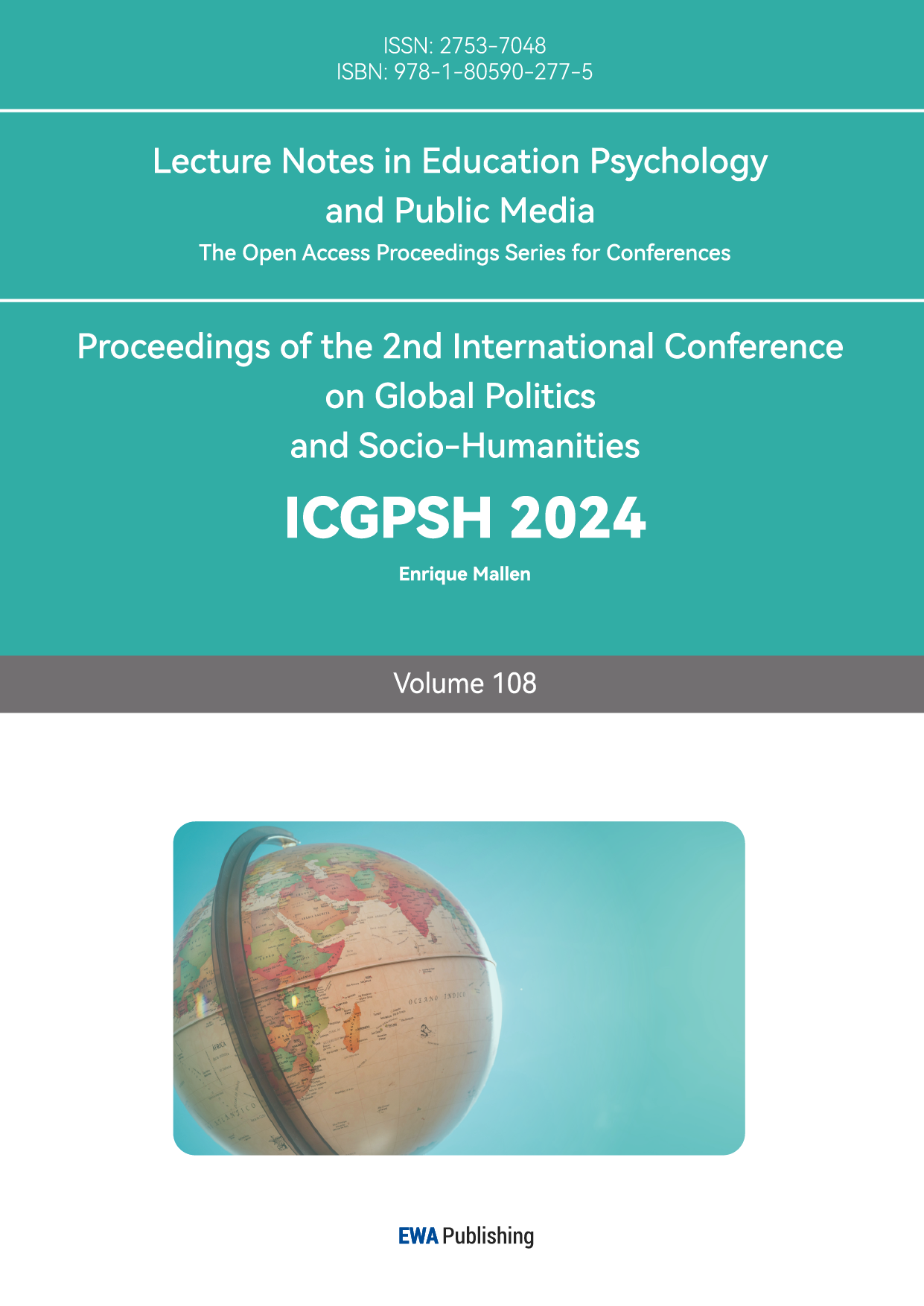References
[1]. Pai, C. K. , Liu, Y. , Kang, S. , Dai, A. (2020) The role of perceived smart tourism technology experience for tourist satisfaction, happiness and revisit intention. Sustainability, 12(16):6592.
[2]. Donahue, M. (2021) " Times They Are a Changin"-Can the Ad Tech Industry Survive in a Privacy Conscious World?. Cath. UJL & Tech, 30: 193.
[3]. Davenport, T. , Kalakota, R. (2019) The potential for artificial intelligence in healthcare. Future healthcare journal, 6(2): 94-98.
[4]. Yu, J. , Yu, Y. , Wang, X. , Lin, Y. , Yang, M. , Qiao, Y. , Wang, F. Y. (2024) The Shadow of Fraud: The Emerging Danger of AI-powered Social Engineering and its Possible Cure. arXiv preprint arXiv:2407. 15912.
[5]. Kaur, A. , Kaur, P. (2023) Predicting customers’ intentions to adopt the solar net metering system in India. International Journal of Energy Sector Management, 17(6): 1252-1270.
[6]. Sraml Gonzalez, J. , Gulbrandsen, M. (2022) Innovation in established industries undergoing digital transformation: the role of collective identity and public values. Innovation, 24(1): 201-230.
[7]. Behera, R. K. , Gunasekaran, A. , Gupta, S. , Kamboj, S. , Bala, P. K. (2020) Personalized digital marketing recommender engine. Journal of Retailing and Consumer Services, 53: 101799.
[8]. Frey, M. (2021). Netflix recommends: algorithms, film choice, and the history of taste. Univ of California Press.
[9]. Guo, B. , Jiang, Z. B. (2023) Influence of personalised advertising copy on consumer engagement: A field experiment approach. Electronic Commerce Research, 1-30.
[10]. Sahni, N. S. , Narayanan, S. , Kalyanam, K. (2019) An experimental investigation of the effects of retargeted advertising: The role of frequency and timing. Journal of Marketing Research, 56(3): 401-418.
[11]. Skillius, E. , Jacobsson, A. (2024) Beyond the Algorithm-How AI-Driven Personalized Ads Shape Consumer Loyalty.
[12]. Schwartz, B. (2015) The paradox of choice. Positive psychology in practice: Promoting human flourishing in work, health, education, and everyday life, 121-138.
[13]. Sapountzi, A. , & Psannis, K. E. (2018) Social networking data analysis tools & challenges. Future Generation Computer Systems, 86, 893-913.
[14]. ur Rehman, I. (2019) Facebook-Cambridge Analytica data harvesting: What you need to know. Library Philosophy and Practice, 1-11.
[15]. Hinds, J. , Williams, E. J. , & Joinson, A. N. (2020). “It wouldn't happen to me”: Privacy concerns and perspectives following the Cambridge Analytica scandal. International Journal of Human-Computer Studies, 143, 102498.
[16]. Mittelstadt, B. (2021) Interpretability and transparency in artificial intelligence. The Oxford Handbook of Digital Ethics (online edn, Oxford Academic, 10 Nov. 2021). https://doi. org/10. 1093/oxfordhb/9780198857815. 013, 20
[17]. Raiser, K. , Kornek, U. , Flachsland, C. , Lamb, W. F. (2020) Is the Paris Agreement effective? A systematic map of the evidence. Environmental Research Letters, 15(8): 083006.
[18]. Sharot, T. , Rollwage, M. , Sunstein, C. R. , Fleming, S. M. (2023) Why and when beliefs change. Perspectives on Psychological Science, 18(1): 142-151.
[19]. Tufekci, Z. (2014, May) Big questions for social media big data: Representativeness, validity and other methodological pitfalls. In Proceedings of the international AAAI conference on web and social media (Vol. 8, No. 1, pp. 505-514).
[20]. Cadwalladr, C. , Graham-Harrison, E. (2018) ao Cambridge Analytica: links to Moscow oil firm and St Petersburg university. Sat, 17, 17-59.
[21]. DeNardis, L. , Hackl, A. M. (2015) Internet governance by social media platforms. Telecommunications Policy, 39(9): 761-770.



